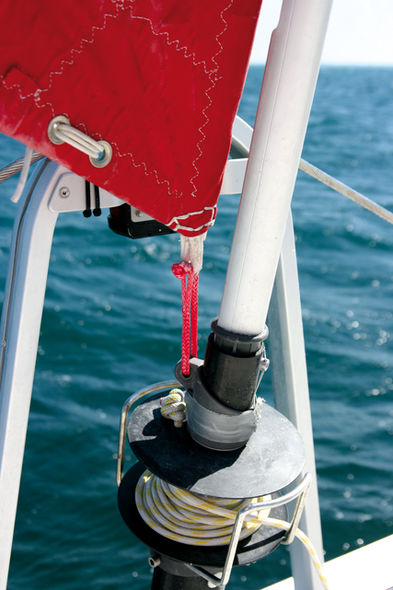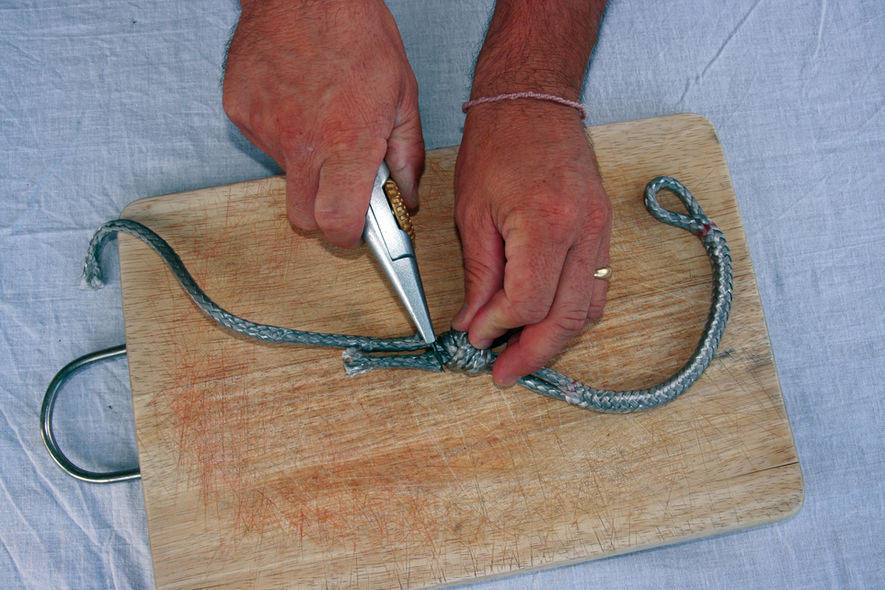
Issue #: 146
Published: March / April 2016
- Price per issue - digital : 5.40€Digital magazine
- Access to Multihulls World digital archives Digital archives
Behind the name ‘soft shackle’ hides quite simply a fiber rope shackle. Light, incredibly strong and above all, very easy to make. And as the icing on the cake, this high-tech plaything will cost you less than a stainless steel shackle.
Progress as regards ropes has been spectacular: racing boat preparers have made no mistake. Their boats are sailing shop windows for their art of ropework. On our more conventional boats, we can of course make use of these new materials. The most commonly used is Dyneema. This fiber resists UV and chafe perfectly. Above all, for the same diameter, it is twice as strong as stainless steel. And for the same weight, the ratio leaps to 12! It is therefore tempting to use Dyneema to replace our traditional stainless steel shackles and snap links. Or even our bulky bowlines on the genoa clew. Lightweight and very thin, the fiber shackle doesn’t weight the leech of the sail in light weather, doesn’t catch on the shrouds when tacking, and will not injure a crew member on the foredeck when the sail flogs. It is easy to open, and particularly recommended aboard boats where the headsails are changed. Try it, and you won’t be able to do without it aboard your multihull!
Necessary tools:
A set of hollow fids,
a marker pen,
a cutting board,
a Stanley knife,
a lighter.

The stainless steel shackle which links the roller reefing gear and the genoa luff on our Leopard 39 has just broken...not serious, the cruise continues, thanks to fiber!
Heat the blade of the knife and cut a meter of Dyneema, 4 to 6mm in diameter. No bigger, as the rope becomes hard to work with. Make two marks, at 60 and 80 cm from one end.

Wedge this end in the fid, which is equipped with a short tab which holds the line in place.

Push the fid into the 60cm mark. Move it along right in the middle. To make this easier, untwist the rope slightly. Bring the fid out at the 80 cm mark.

Pull the rope through, maintaining a loop, in which you pass a finger. You no longer need the fid.

Make an overhand knot with both ends together. Remember to retain a loop here of the same diameter as the previous one.

Using the heated cutter, cut off the two ends.

Each loop can be enlarged by quite simply pulling on the side which slides. It is closed by pulling on the doubled part.

Your fiber shackle is ready! You can use it singly or in a figure of eight, by threading the loop end into the second loop against the knot.

The fiber shackle is an excellent replacement for a stainless steel shackle or the classic double set of sheets with bowlines. Use just one sheet, fixed with an overhand loop or a splice.

“The fiber shackle fitted to the genoa clew offers many advantages and no disadvantages: it doesn’t open on its own, but for all that, it doesn’t need any tools to open it. It is lightweight, and therefore better when the headsail flogs. The sailcloth is better protected, as is the mast and above all, the crew members’ faces. This system, with an overhand loop or better still, a splice, also allows you to mark the sheets, and thus more easily find the correct adjustments. At ...
What readers think
Post a comment
No comments to show.